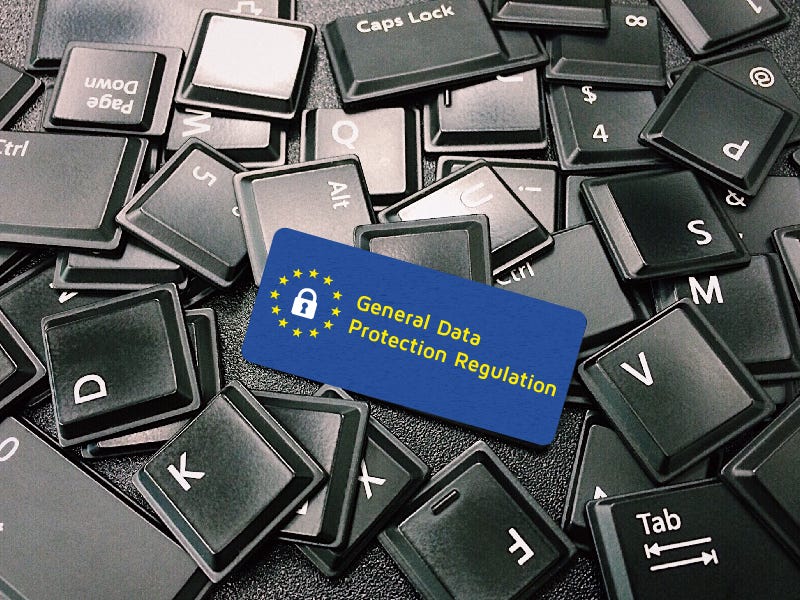Navigating the Cybersecurity Regulation Landscape
Comprehensive Guide to GDPR, HIPAA, and PCI DSS Compliance for Enhancing Your Business Cybersecurity
Introduction
Feeling overwhelmed by the endless wave of new laws and regulations? You’re not alone. For new businesses, navigating rules like HIPAA, PCI DSS, GDPR, and CCPA can seem daunting. But take a deep breath—compliance doesn’t have to be a nightmare. In this article, I'll guide you through three key regulations you may encounter as a business owner. We'll explore their scope, requirements, and potential penalties for non-compliance. Next, we'll discuss common compliance challenges organizations face. Then, we'll dive into a case study on PCI DSS v4 compliance. Finally, I'll share tools and resources to aid you in your compliance journey.
Understanding The Cybersecurity Regulatory Landscape
GDPR
In 2016, the EU adopted the General Data Protection Regulation (GDPR), replacing the 1995 Data Protection Directive to address modern internet privacy needs [1]. The GDPR is recognized as a law and its scope applies to any company that processes personal data of, monitors the behavior of, or offers goods or services to citizens of the European Union—regardless of the organization’s location. Small to medium-sized businesses processing such data must comply as well. There are seven principles [2] that organizations are required to meet to be considered compliant:
Lawfulness, fairness, and transparency
Purpose limitation
Integrity and confidentiality
Data minimization
Accountability
Accuracy
Storage limitation
Data controllers are responsible for meeting these principles and demonstrating compliance. For organizations not in compliance, the penalties can be substantial. Your organization may face fines of up to 10 million Euros or up to 2% of its entire global turnover from the preceding fiscal year, whichever is greater.
HIPAA
In 1996, Bill Clinton signed the Healthcare Insurance Portability and Accountability Act (HIPAA) into law. The Privacy Rule became effective in April 2003, followed by the Security Rule in April 2005, and the Breach Enforcement Rule in March 2006. This series regulations culminated the final Omnibus Rule, which became effective in 2013 [3].
The Privacy Rule protects Patient Health Information (PHI), including electronic records (ePHI). This data is typically held by health plans, healthcare providers, and clearinghouses. The rule covers any identifiable health data related to an individual’s health, healthcare services, or payments for healthcare. Information not explicitly related to identifiable data is not covered. Some of the requirements for meeting HIPAA compliance include:
· Informing patients of their privacy rights
· Training employees on privacy procedures
· Protecting ePHI against unauthorized disclosure
· Ensuring the confidentiality, integrity, and availability of ePHI
· Notifying individuals of a breach in writing (via email or mail)
Stiff penalties exist for violating HIPAA compliance, including civil and potentially criminal charges. Civil penalties can range from $100 to $50,000 per violation, with a yearly maximum of $1.5 million for repeat violators. Criminal penalties can result in up to 10 years in prison and a $250,000 fine for selling or transferring PHI for personal gain, and up to 5 years in prison and a $100,000 fine for false pretenses [4].
PCI DSS
In the early 2000s, rising credit card fraud prompted Visa and Mastercard to create PCI DSS version 1.0, which was launched in December 2004 [5]. The PCI Security Standards Council was established in 2006, and in 2022, PCI DSS version 4.0 was released to the public.
The scope of PCI DSS involves identifying processes, people, and technologies that impact or handle the security of cardholder data. Your organization’s cardholder data environment (CDE) must comply with all twelve PCI DSS rules. Key requirements include:
Encrypting transmitted data
Monitoring network access
Using strong passwords
Installing and updating anti-virus software
Regularly testing security
Non-compliance can result in fines of up to $500,000 per security breach. The total cost can be even higher when considering potential fines, increased audit requirements, and lost business due to downtime. Additionally, your organization may lose the ability to process credit card transactions [6].
Navigating Compliance Challenges
Common Hurdles Faced
Navigating the landscape of laws and regulations is challenging enough, but meeting compliance brings additional hurdles. Limited staff resources can drain your time and efforts, leading to burnout. The scope of compliance can also be a major complication, especially depending on your organization’s jurisdiction.
For example, if you are a telemedicine company processing credit card data, handling protected health information, and serving international customers, such as those in the EU, the scope of your compliance efforts can be overwhelming. Even seemingly simple compliance tasks, like privacy and breach notifications under HIPAA, can become a delicate balancing act for your security team.
Inadequate or incomplete assessments can leave your business without a compliance certification or, worse, result in compliance failure. This is not an exhaustive list, but it highlights some key challenges to prepare for to avoid these pitfalls moving forward.
Strategies to Overcome
What proactive steps can we take to enhance our compliance efforts? Conducting a SWOT analysis—evaluating your strengths, weaknesses, opportunities, and threats within the scope of your operations—can help determine if you have the and resources needed for compliance. Early definition of your compliance vision is crucial; it clarifies what falls within your compliance scope and what does not. Establish roles and responsibilities from the outset and clearly communicate your expectations. If navigating this still feels overwhelming, consider hiring a compliance expert to guide your organization toward its goals. In the next, we'll explore how Shopify achieved compliance with PCI DSS v4, followed by sharing some tools and resources to assist you on your compliance journey.





